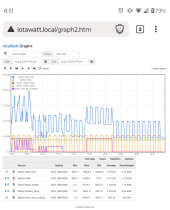Zwy
Solar Wizard
Compact and lightweight are probably pouch cells. I would be a little leery in an RV application, the Up In Smoke forum here had an RV fire with pouch cells.for a ground based system DIY batteries can be a valid choice, however, for an RV not so much. i've not done a deep dive into DIY batteries recently but a quick cursorily scan showed me that the batteries i would want to use for a DIY are the same price or more than a pre-built system. in this case i would want compact light weight batteries which usually cost more.
I use prismatic in my truck camper 24V system. I do use a compression fixture.



